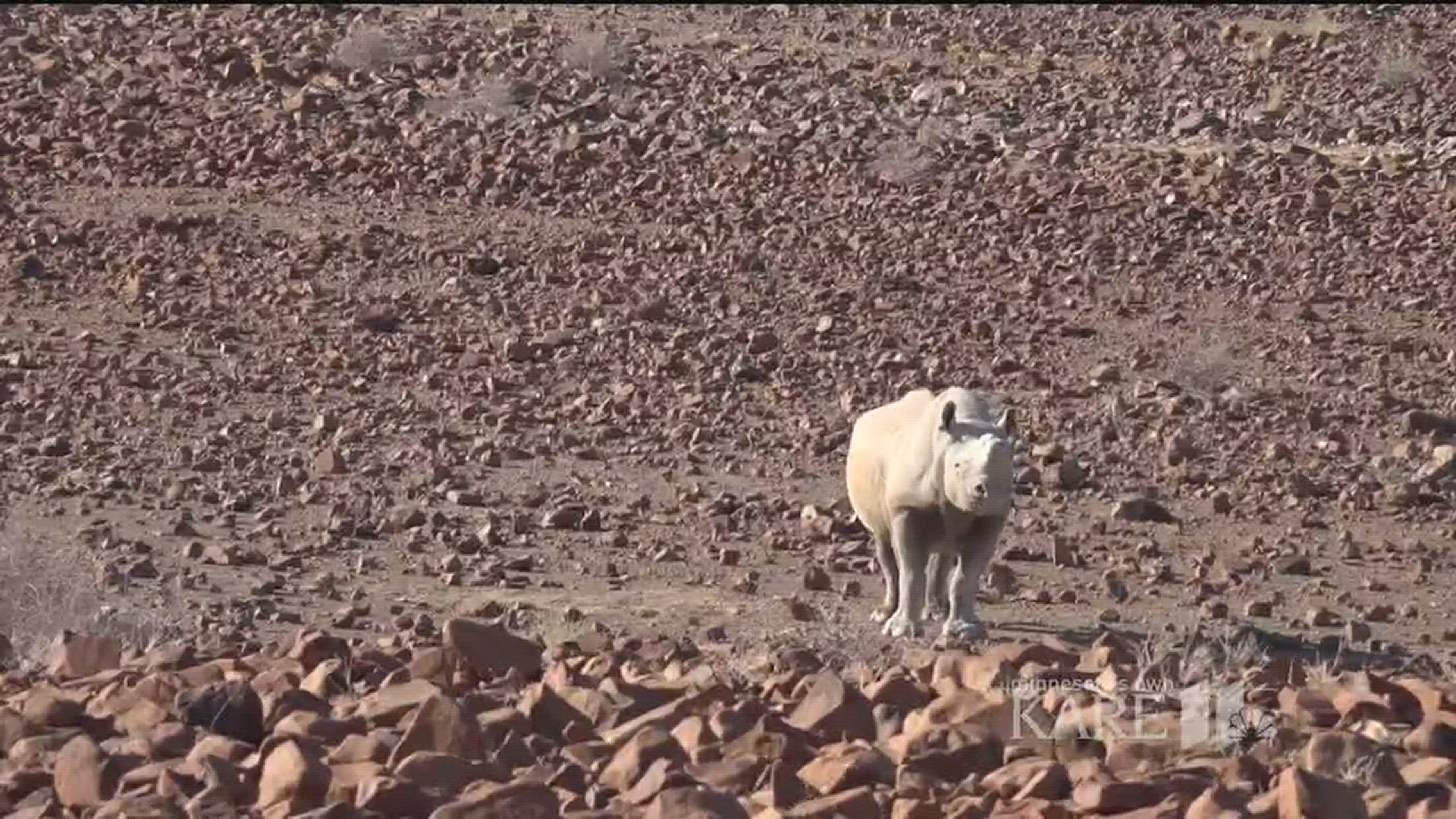MINNEAPOLIS - What an adventure!
Back in early June I got an e-mail from the Minnesota Zoo: “Hey we know you like to travel, and we saw your polar bear stuff. Want to go see what the Zoo is doing to save black rhinos in Namibia?”
My immediate response of course, was UM YEAH, but how? When? The response: July.
Ha! Long story short we made it happen! I booked a flight to Cape Town, South Africa two weeks before departure (I’ve never flown so far so last minute!). From there I would take the national airline of Namibia “Air Namibia,” of course, to the capitol of Windhoek.
I have to be honest. I’m pretty good with geography. I know a little about a lot of places in the world, but I really had to read up on Namibia. Namibia, like much of Africa, has a sometimes tragic past of colonialism, war, civil war, disease, but then hope and rebirth.
Some facts about Namibia: it is the least densely populated country on earth. Most of it is rugged desert (which is where some incredible animals live).
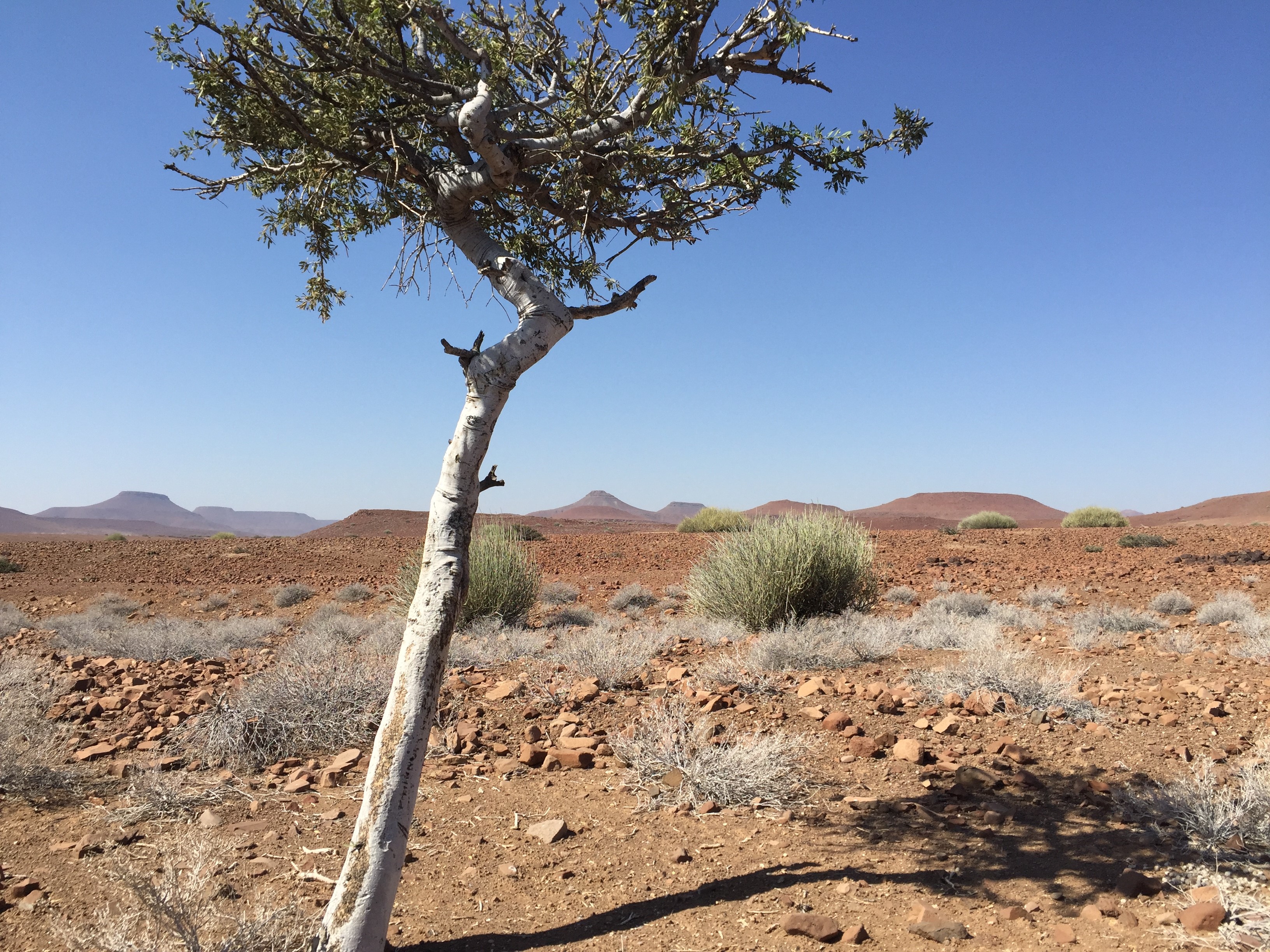
Namibia is home to many different ethnic groups, each speaking different languages. English, German and Afrikaans are widely spoken. German, you ask? Yes, Namibia was a German colony, but then in a complicated chapter in history became part of South Africa. Then the country was under the British Empire. They fought a civil war in the 1980s against the Apartheid Government of South Africa. Namibia gained its independence in the early 1990s.
The name came from the Namib desert, the world’s oldest desert geologically speaking. It is home to the Black Rhino, elephant, Angolan giraffe, spotted hyena, desert lion, cheetah, Oryx, ostrich, zebra, and of course many more things!
Namibia has one of the highest HIV rates in Africa as well. A large population of children have been tragically orphaned due to the death of their parents to HIV/AIDS. But Namibia is one of the most stable and successful countries in a troubled region. This has helped it to become of one of the leaders in Africa in conservation of its endangered species.
While poaching is a problem for many of Africa’s treasured animals, the black rhino has a very tragic modern history. Ninety-seven percent of Africa’s black rhino were wiped out from the 1960s to the 1990s. Just a short 30 year period!
The biggest problem is the desire for (illegal) rhino horn primarily desired in Asia for old eastern medicinal uses and in more modern times as a status symbol (since it is worth more than gold by weight). Namibia, in particular, faced a threat in the 1980s of hunting by South African soldiers shooting rhino and elephant for sport. This low point led to the founding of "Save the Rhino Trust" (SRT) by a South African woman Lythe Boutit living in Namibia. She was appalled at the number of slaughtered rhino.
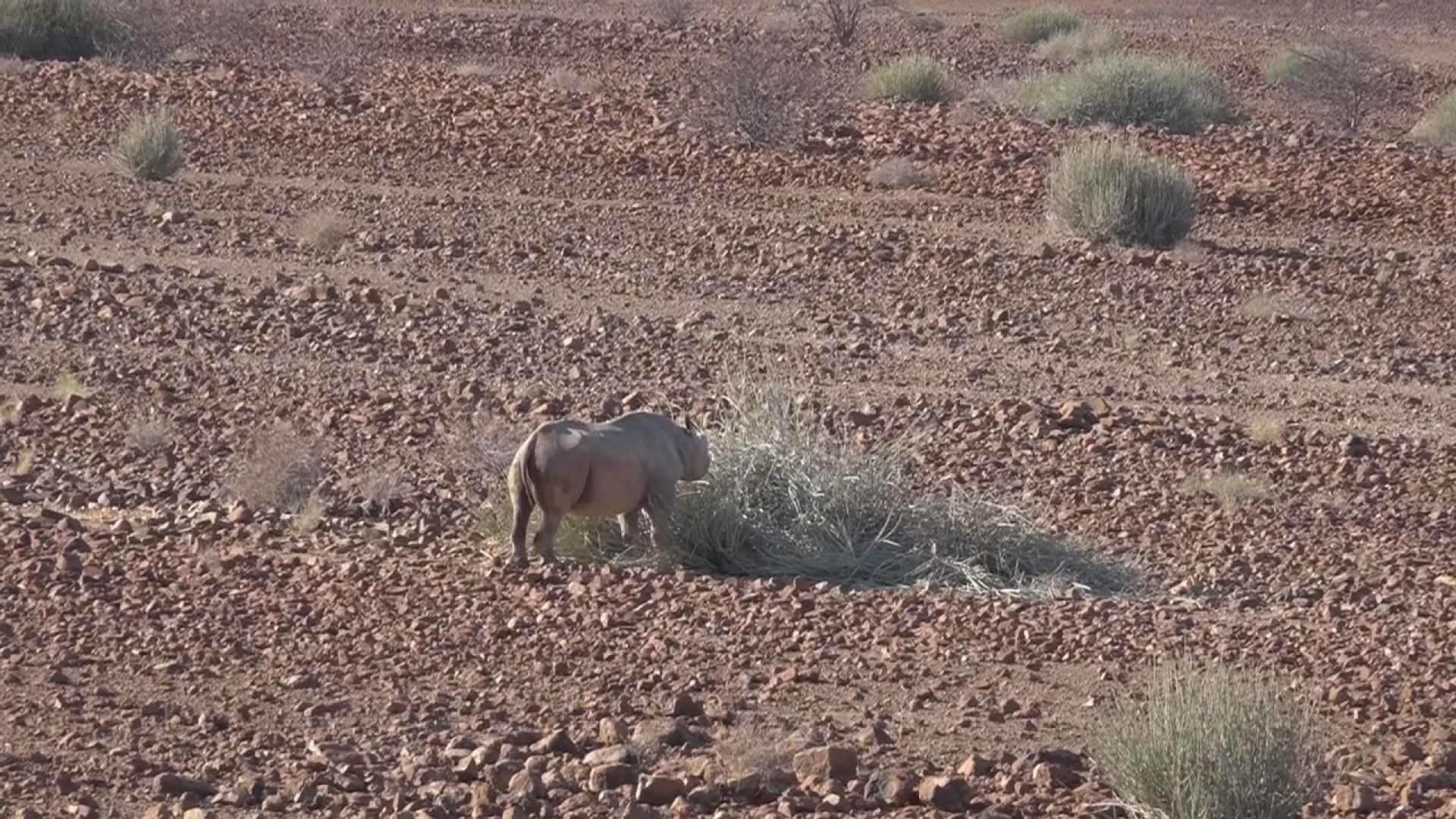
The concept they developed to fight the poaching problem was radically different. Much of the rest of Africa was following an approach of ‘war against’ poaching. Basically working with the idea that poachers have weapons, so we fight them and guard the animals with guns.
Blythe and the SRT founders thought of a different way. They use former poachers to help track and protect the rhino and try to get the local communities to see the rhino as more valuable ALIVE rather than for their horn. (Local poachers receive a fraction of the value of the rhino horn from middlemen). To do this required a mix of tourism, hiring local trackers in communities (some of which were former poachers), along with a police-like presence from the government.
The herd of rhino we are particular concerned with in this part of Namibia is a black rhino subspecies called a 'desert adapted black rhino'. Their numbers were at a low point of about 25-40 animals by the early 1990s.
Today that number is almost 200. Most of the 90s and 2000s saw little to no poaching, but poaching has spiked in the last several years starting in South Africa and spreading through Africa. Even in a stable oasis like Namibia poaching has returned.
But, while three to five rhinos PER DAY can be poached in South Africa, the number is more like five to six PER YEAR in Namibia. With a critically endangered species like the black rhino, one dead rhino by unnatural means is too many.
While poaching has returned to Namibia, there are groups fighting it. Desert Rhino Camp (operated by Wilderness Safaris- which has several eco-tourist camps through Africa) is a luxury tourist camp in the middle of nowhere in the Namib desert. It is a great example of what’s happening to save the Rhino today. By bringing in tourists, who spend several hundred dollars per day, they are increasing the value of a LIVE rhino to much more than the short term gain of a dead rhino’s horn.
Save the Rhino Trust trackers (a separate non-profit whose sole purpose is to protect and save the rhinos) works in cooperation with tourism ventures such as Desert Rhino Camp. SRT trackers go out on regular patrols literally keeping track of the 200-odd black desert rhinos. They take photos, note any irregularities, identify the individual rhino, and communicate with guides from the camps to help bring tourists to a spot safely to see the rhino (safe for the tourist, but just as importantly safe for the rhino to not disturb its natural behavior).
Jeff Muntefering, a native Minnesotan (from Sartell) is a conservation biologist employed by the Minnesota Zoo, but works with SRT and entities like Desert Rhino Camp to help develop the best ways to allow the careful balance between tourism and the real necessity of rhino conservation. Jeff’s PhD work concentrated on things such as what is a safe distance out of sight, sound and smell for the rhino and tourist.
What’s incredible is Minnesotans directly contribute to saving black rhino in Namibia by funding needs of Save the Rhino Trust (such as boots, uniforms and salary for trackers who protect and monitor the 200 black rhinos there).
On with the travels!
Day 1:
I arrived in the capitol of Windhoek, Namibia (after an overnight in Cape Town, South Africa which I can say by air is gorgeous, must go back!) in the late morning.
Before this trip I’d been to Africa twice, but in Egypt - a far cry from southern Africa with all its wildlife! I was already in awe seeing baboons just hanging out on the side of the highway, while at the same time noting my driver was going about 80-90 mph on a road that was more like a county highway here that might be 55 mph. (Namibia has a high rate of automobile accidents, fatal ones, for this reason!)
My driver tells me, “Oh the baboons, you’re excited about?! They’re everywhere!” He was right. I stayed at a lodge outside the city for one night of comfortable accommodations and a good meal (recommended by Jeff) I would, after all, be ‘roughing it’ for a good chunk of the week ahead.

I was still jet lagged and tired from a day of flying from Minneapolis to Africa and just about six hours worth of sleep in Cape Town the night before. After unpacking and settling into a bungalow I had separate from the lodge, I left to hike to the main lodge to have lunch and a beer in the sun. It is winter in Namibia in July since it’s in the southern hemisphere, but it’s still warm by day. It's in the 70s, even near 80, but at night it really cools off (30s & 40s!).
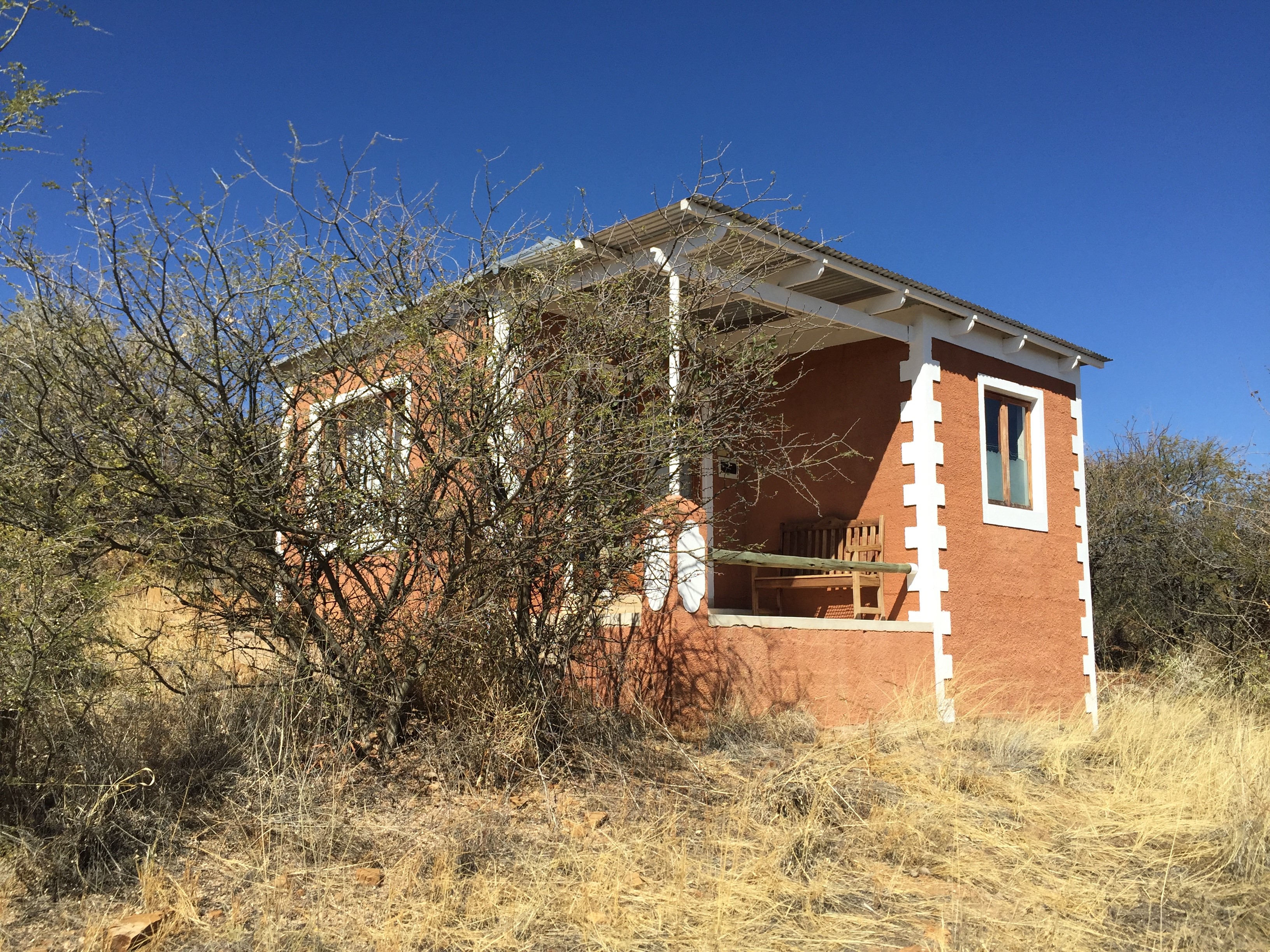
As I was walking through the long grass on a dirt trail to the lodge I heard this awful barking sound! As I was half awake, I was startled. Here I had accidently wandered into what looked like a family of 10 to 20 baboons! Boy, are they scary looking up close! They ran off, more terrified of me, than I of them, but was my heart ever racing!
That evening I decided to be adventurous and try Oryx steak on the menu. It’s a red meat (I usually avoid) best described as some time of antelope creature but ‘beefier.’ It was delicious and lean!

Day 2:
Day two in Namibia, I had to leave early to catch two ‘bush flights’ (small planes) from the capitol of Windhoek (eastern Namibia on high plains) to the west of Namibia in the heart of the Namib desert - home of the black desert rhino.
I was warned ahead of time these flights would be bumpy (WOW, were they ever!) as I was flying over desert and mountains, but what a gorgeous landscape. It looks like flying over the grand canyon or the desert southwest in the United States.
I finally arrive to a dirt landing strip with no buildings, no nothing but a flock of ostriches prancing by in the distance and a jeep waiting for me that has the logo of Minnesota Zoo and Save the Rhino trust on it! (imagine a sight like that 10,000 miles away!).

Here I met Jeff and Johan. Johan is one of the best guides and trackers and works for Desert Rhino Camp. I would spend one night there to get a taste for the tourism angle of the black rhino conservation here. I drove with Johan for about one hour through what seemed like nothing! A Martian landscape. There are no real roads, just mere tire tracks in the rocks. The landscape is a red, rocky one, with occasional bushes, and scrubby trees.
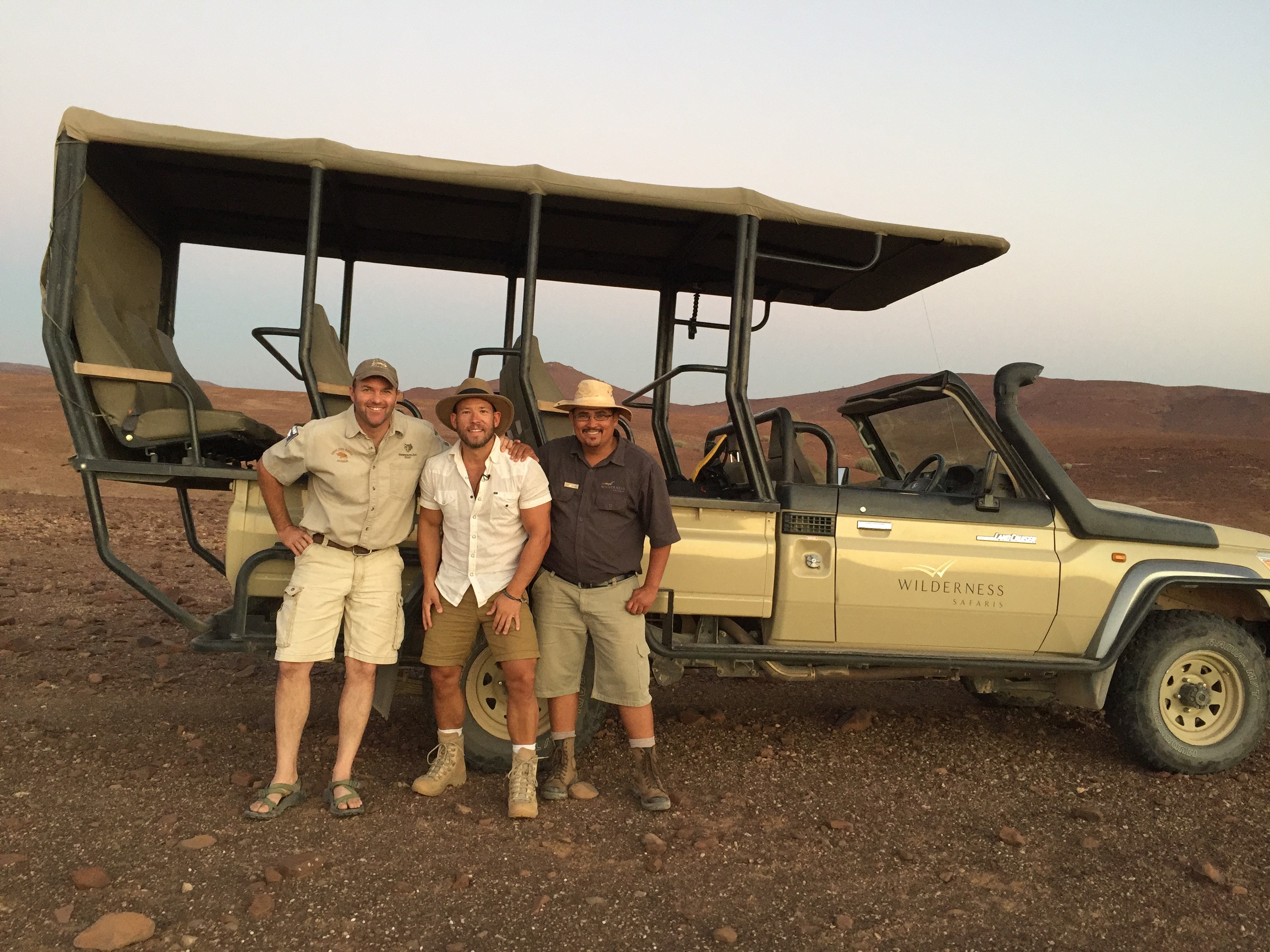
It’s the dry season in the winter there, plus they’re in the midst of a severe drought (no rain in four years!) On the way though, we see giraffe, ostrich, oryx (which I ate for dinner the night before), but no rhino, and no elephant---- YET.
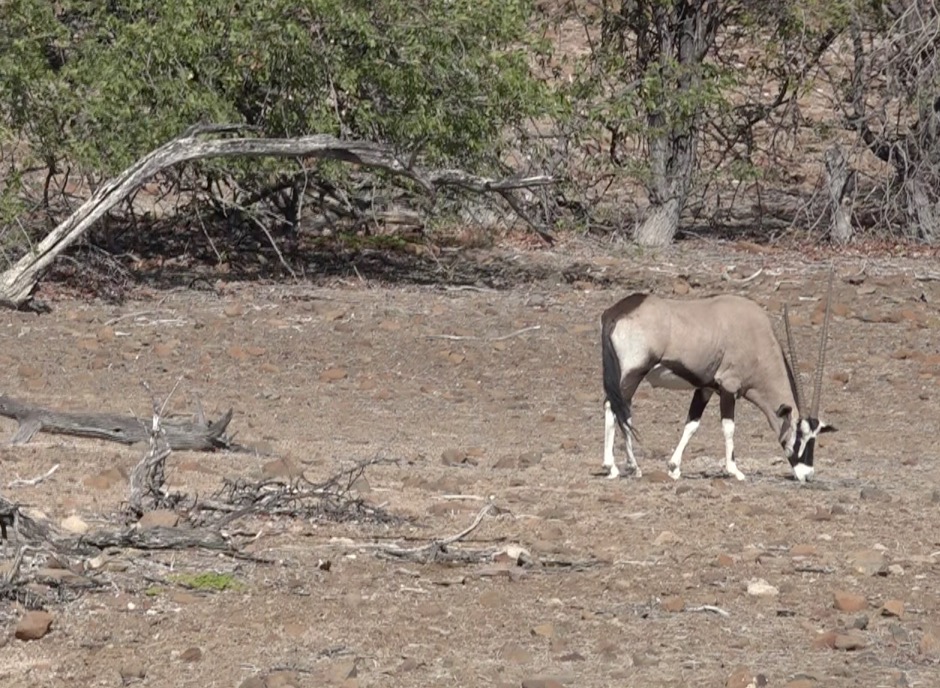
We arrive to Desert Rhino Camp, have a cool drink and I settle in a bit to my canvas hut I’ll be staying at overnight. DRC is a luxury camp though, don’t be fooled, you’re not roughing it there too much. After dropping off my bags, it’s time to head out to see what wildlife we can find with just a few hours of day light left.
Things appear pretty quiet out on the rocky desert, but after an hour or so of driving and tracking, Johan spots some elephant tracks. He notices the elephants appear to not be stopping to eat. There are few broken branches, but they’re on the move. The big animals of this harsh place are always on the move looking for water. When it does rain, it comes in the form of downpours and flash floods create temporary rivers that then flow underground. Elephants, and all the wildlife here, are very aware where these rare watering holes are.
It’s starting to get very close to sunset and we still haven’t seen the elephants, but we’re hot on their trail yet. FINALLY, literally as the sun is setting and we’re running out of daylight Johan spots the herd over a ridge. What an INCREDIBLE sight! There were about a dozen elephants, even two babies. A matriarch was always stopping occasionally, turning her head and listening, mindful of what potential threats are out there.
[elephants]
We had to race back after that in the dark. I have no idea how Johan knows his way back in the pitch dark, driving over rocks. I guess over a lifetime you ‘just know’ kind of like the animals here do! We arrive back to a large outdoor dinner and campfire put on by the staff at Desert Rhino Camp, such a great way to end the evening!
Day 3:
Today we’re up bright and early. Well, not so much bright, it’s pre-sunrise, but we gotta get a move on early. Save the Rhino Trust trackers start the day well before sunrise so they can communicate to the camp guides. Now we can safely get to the rhino for our photos and stare in awe!
It is chilly here early in the day with temps in the 40s and breezy (coming from Minnesota in July, I’m thin blooded, I guess!).
By about 9 a.m. after driving toward the trackers location, we hear confirmation that they have spotted a rhino in a valley. The trackers give our guides and drivers directions for how to get to where they want us. We drove about two hours across the rocks to get to this place, but we would have to hike a mile or so more to get closer.
Finally, after climbing a big hill to cap off the hike, there he was! A desert black rhino. His back was facing us as he was chomping on a Euphorbia bush. These bushes are some of the only plant life in vast tracts of this desert. They’re actually toxic to most, and not particularly nutritious for the rhino, but it doesn’t affect them negatively. Think of it as us munching on potato chips, not good, but whatever, we can eat them without immediate dire consequences.
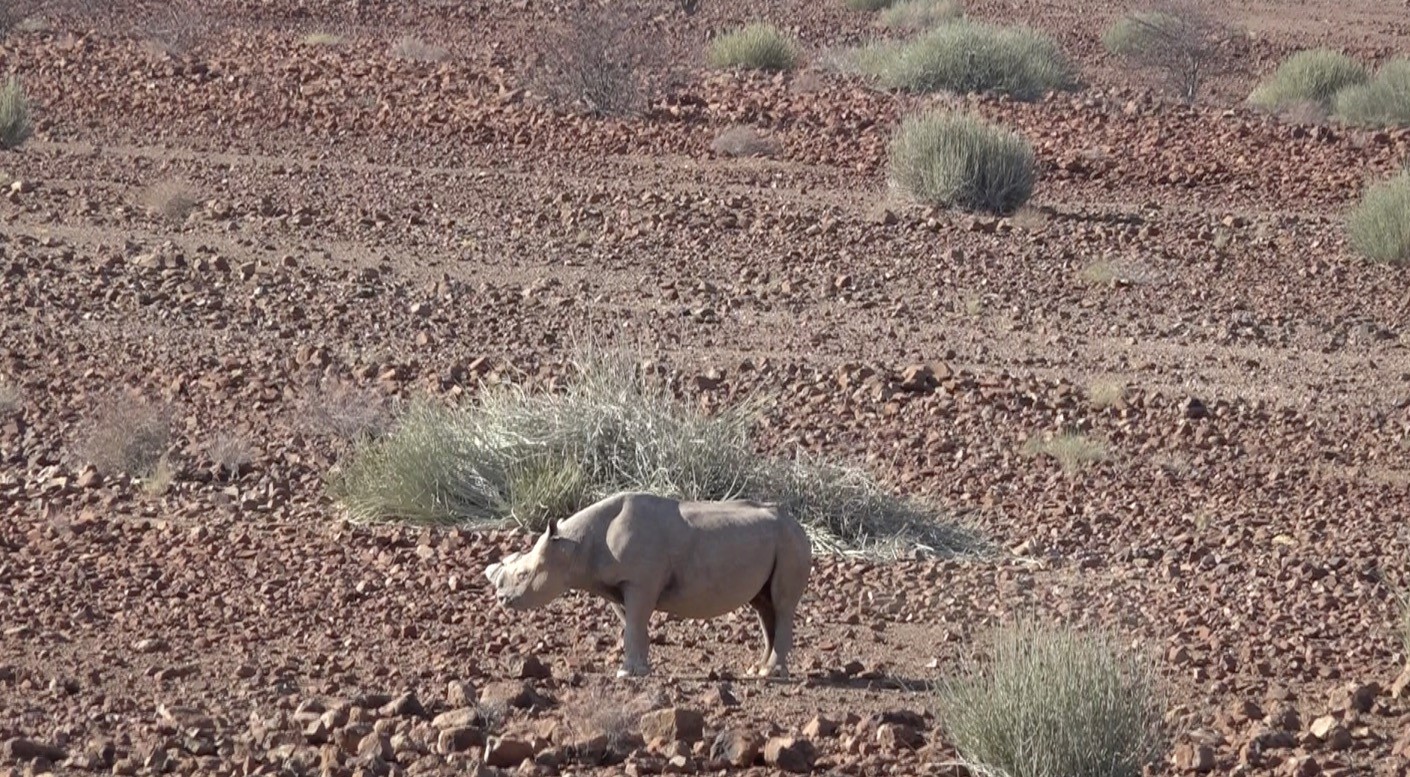
We spent about 30-45 minutes watching this rhino, named “Don’t Worry.” He is one of the most viewed rhinos in the Palmwag Concession (this part of Namibia). The first thing you notice, is his rounded half nub of a horn. The Namibia government does de-horn rhinos in an attempt to keep off poachers, but like our finger nails, it has to be done regularly.
Even a small amount of rhino horn is worth a lot of money. The practice is controversial, with mixed results (some say poachers, frustrated with tracking a rhino that has no horn, often kill the rhino anyway so they don’t have to track that one again).
he procedure is also pretty intense and expensive. The rhino must be darted and sedated, which is a risk for a big mammal like this.
I like “Don’t Worry’s” name though. He offers hope, kind of like Namibia in general for saving this critically endangered animal.
After a time, we think he starts to catch onto us. Did he smell us? Did he hear us? Rhinos have rather poor eyesight but their sense of smell and hearing are very good.
Trackers try to position us so the rhino doesn’t even know we’re there. That’s the best thing for them and us in the long run. You could see “Don’t Worry” march toward us a bit, stop, listen, smell, eat some more. Then he would do the same a few more yards closer. That was enough for the trackers to call an end to this viewing. We hiked back to our vehicles and back to Desert Rhino Camp for a much needed lunch!
Most tourists stay at DRC for two or three nights, I just stayed one, as I’m now heading to “World’s End” (ominous sounding, right?!) It’s the base camp for Jeff and a few other NGO’s doing work to save endangered species and wildlife research.
It’s a community of several buildings and just maybe a dozen individuals. It’s solar powered, and it really does seem like the “End of the World.”
After a drive of another couple hours we arrive. After a luxury night at Desert Rhino Camp (and my lodge in Windhoek), this will be roughing it! No bathroom, just an outhouse, and a couple of cold water showers outside for everyone to share.
Everything is also incredibly dusty here due to it being the desert but also the extreme drought. You almost think it’s not worth showering since you’ll be dirty soon enough again.
In my three days at World’s End, I took one midday shower (I dare not go with the light of my iPhone to the shower stalls at night since hyenas are everywhere!).
As evening approached I finally had a chance to sit down with Jeff Muntefering and interview him in depth about rhino conservation and the Minnesota Zoo’s role. Jeff is employed by the zoo as a conservation biologist - a position created with a vision years ago to give the zoo a conservation message anywhere in the world where there’s a need.

Jeff was a perfect fit for the role as a native Minnesotan (Sartell!) and already working with Save the Rhino Trust as an established conservation biologist.
You might think it’s an odd fit, so far away, and the fact that neither of our Minnesota zoos have a black rhino. The point is in the changing role zoos play in the U.S. now, as an educator and messenger of conservation, and helping the planet and wildlife, not the old idea of just seeing animals in cages. You can directly contribute to rhino conservation through the Minnesota Zoo’s website.
We then had a ‘sundowner’ as they call them in South Africa. It's a drink as the sun sets and you prepare a camp fire. It’s incredible in this remote place. It's so dark you can see every star, but in the southern hemisphere sky! Jeff assures me there are hyenas watching from a distance and that I would hear them at night!
Day 4:
I spent today mostly hanging around World’s End and meeting some of its inhabitants, getting general video and photo shots. Jeff had meetings with Save the Rhino Trust key people. It just so happens I’m there during this critical time as the organization formulates their approach to poaching and continuing their rhino conservation work.
One eerie place I checked out was the ruins of an old settlement house (likely colonial days). Gee, wonder why they didn’t make it here!? It’s rough, even for the animals, let alone European colonists used to things like, well, RAIN!
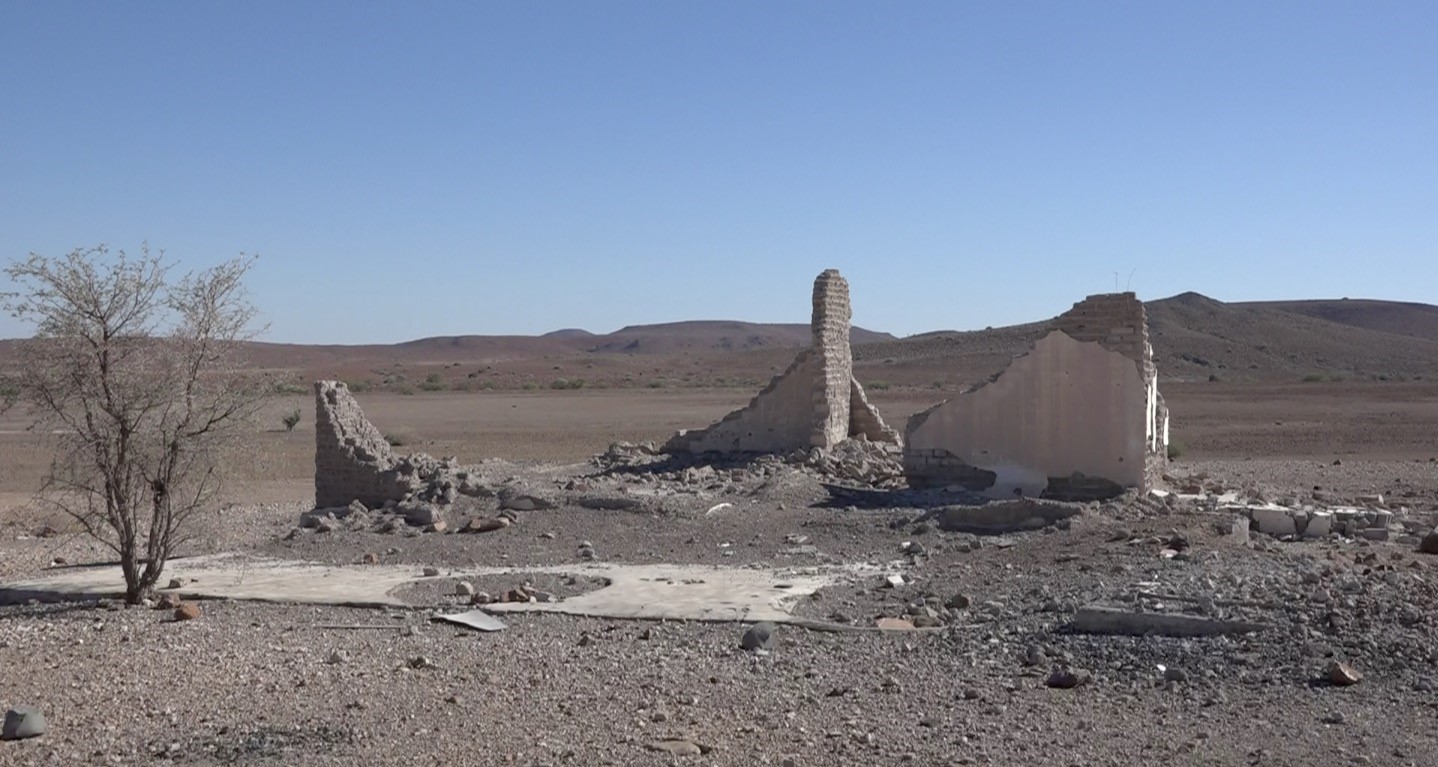
Day 5:
Today was my second day of rhino tracking, this time, not through an official tourist channel but directly with Save the Rhino Trust trackers. This was a truly interesting experience, because these trackers normally work in a different area. You could see first hand their tracking abilities at work: analyzing tracks, disturbed vegetation, and they’re really interested in rhino dung!
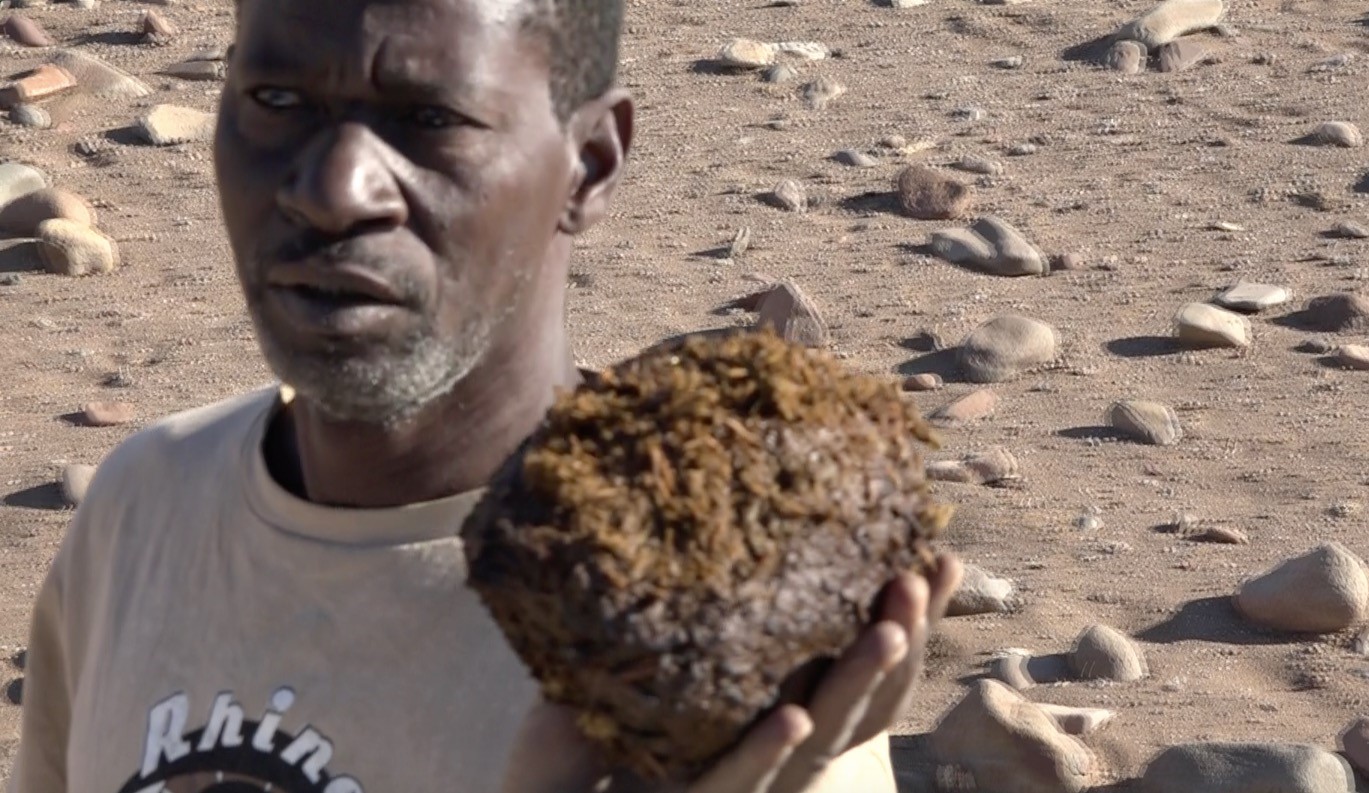
It turns out rhino dung holds a lot of clues from how fresh it is, to what’s in it. A female rhino if she’s ready to mate will make it known in her dung. A male rhino, will come by, get that message, and then destroy that message by spraying over it! I know it might sound like a lot of T.M.I., but fascinating, and further evidence of their incredible sense of smell. [rhino trackers, dung]
We finally came upon a juvenile bull (male) rhino with full horn intact, taking a nap in the bushes. We observe this rhino for several minutes, but then he gets a whiff or a sound of us and stands up. These guys are so incredible to just stare at, something like a prehistoric dinosaur. After another several minutes, he decides to high tail it out of there, but, initially our trackers couldn’t tell where he was running to exactly and moved us quickly, all, while of course I have a camera and tripod!
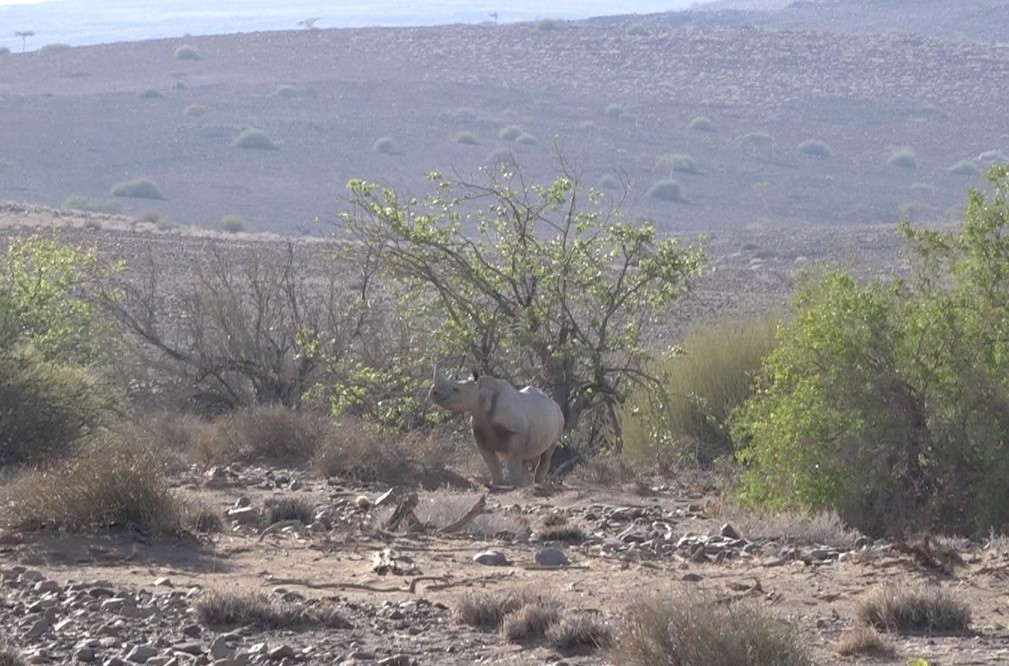
It turns out he was going a completely different direction, but made for an awesome sight. For as big & ‘clunky’ as they look, they CAN run about 30 mph! Much quicker and bigger than us.

After an incredible day tracking rhino, it’s almost easy to forget all the other things we see! Giraffe, are visible just about every outing. What surprised me, is that they’re usually solitary. The only time I saw more than one, was when it was a mother and calf. I guess it’s every man for himself out here. The only thing I saw in groups were elephants and zebra.
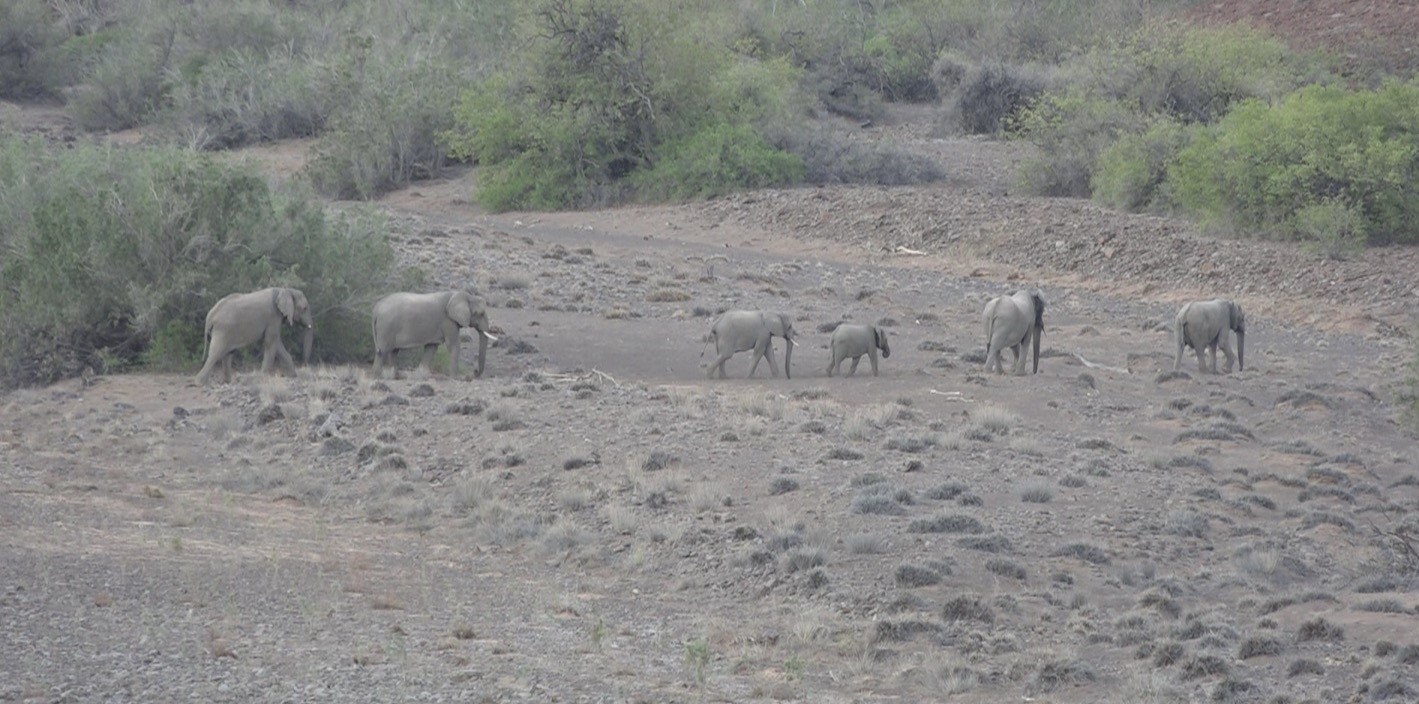
After a morning rhino tracking we had an appointment with the Himba people, an indigenous tribe that is struggling to preserve their traditional way of life in northern Namibia and southern Angola.

They, like the rhino have come to rely on tourism ironically as a way to continue their existence. We were driven by a guide for a two hour journey to their remote village. They were so friendly, and despite seeing tourists often, seemed just as curious about us as we were of them, especially the children! They danced for us, and I left my ‘North’ hat for one of the young guys.
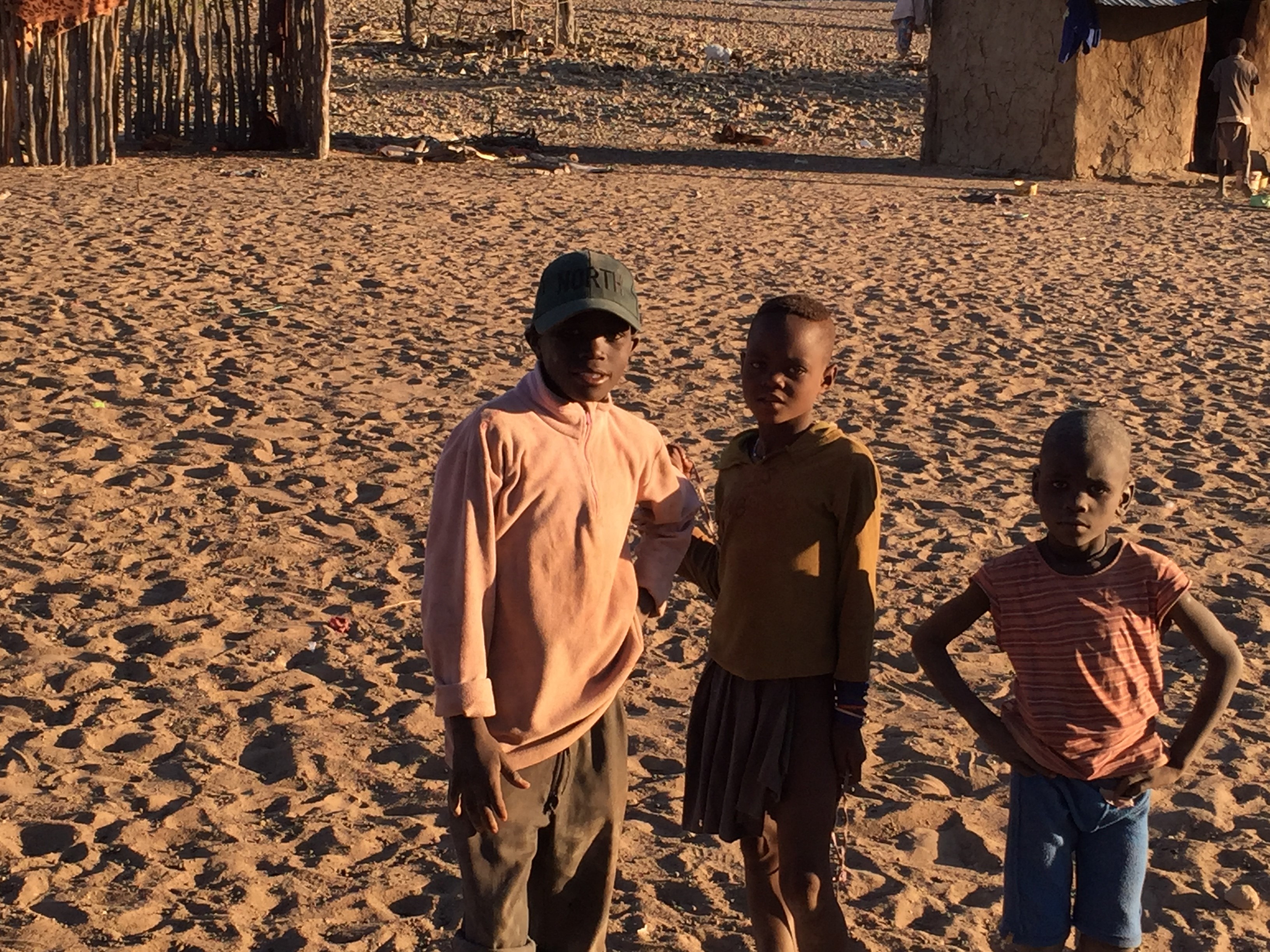
At the end of the long day it was time for another campfire and Jeff’s cooking. He’s way too humble. Each evening he says he’ll ‘try to put something together!” It was always great! Some sort of wild game (it’s cheaper) and a side, along with South African wine.
This night, the hyenas came a littler closer than they had. Finally, after hearing them each night, I saw several. Jeff’s neighbors (who work for the World Wildlife Federation doing research on lions here) had a high powered flashlight.
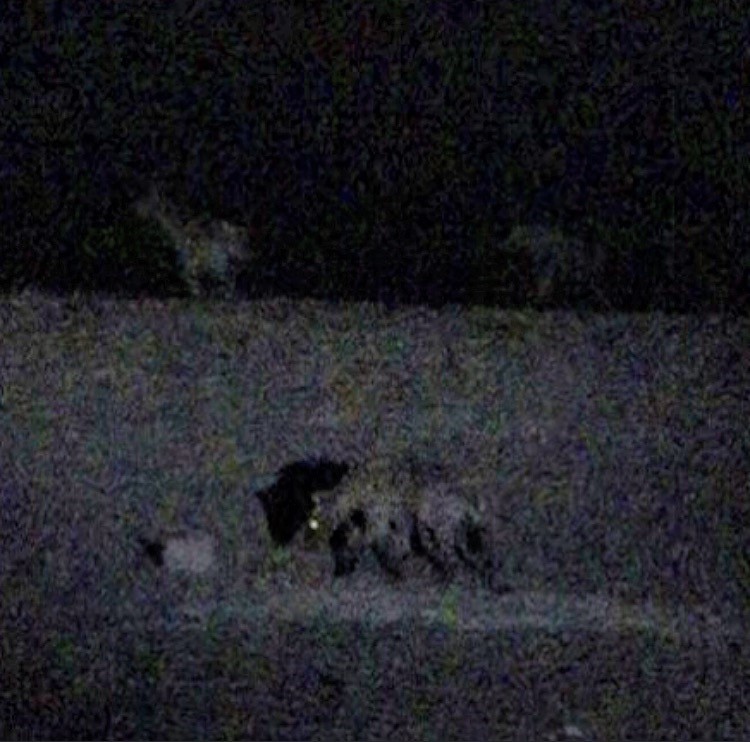
Sure enough, there were several of them circling. My impression of the hyenas was that they’re kind of like puppies, very curious and will CHEW on ANYTHING! Still, they are a creepy looking animal.
I guess we’ve all had bad impressions from the ‘Lion King’ movie. This is my last night in the wilderness and I’m enjoying every last second of it. Tomorrow, back to Windhoek and civilization before departing off to Cape Town and back home after a whirlwind week.
Day 6:
After breakfast, we depart on the two hour drive to the nearest landing strip, Doro Nawas (which has a canvas tent as an airport!). Here I will take a bush flight back to Windhoek and a return to modern amenities.


